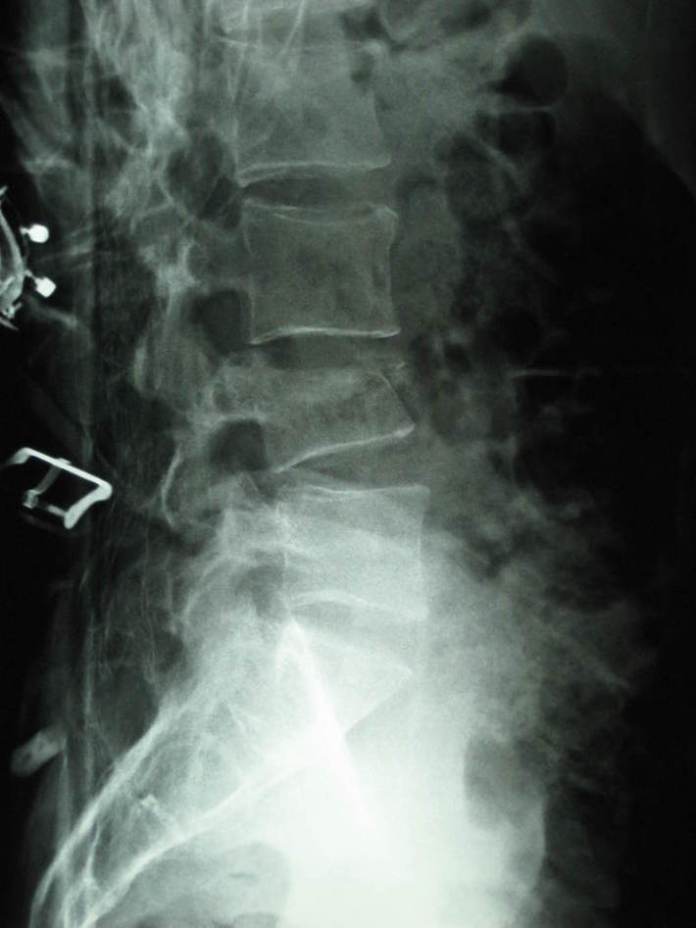
Diagnosis: Compression fracture of the fourth lumbar vertebra post falling from a height.
A lumbar compression fracture refers to a fracture or break in one or more of the vertebrae in the lower back. This type of fracture is often caused by osteoporosis, a condition characterized by decreased bone density and increased risk of fractures. Lumbar compression fractures can cause pain, difficulty standing or walking, and loss of height.
Imaging modalities such as computed tomography (CT), magnetic resonance imaging (MRI), and X-ray can be used to visualize and diagnose lumbar compression fractures. Here is a summary of the findings that may be observed on each modality:
Computed Tomography (CT):
- Lumbar compression fractures may appear as a break or deformity in the vertebral body on CT images.
- CT may also be able to identify other findings associated with a compression fracture, such as degenerative changes in the spine or vertebral collapse.
- CT is generally more sensitive than X-ray for detecting lumbar compression fractures and may be more accurate in identifying the extent of the fracture.
Magnetic Resonance Imaging (MRI):
- Lumbar compression fractures may appear as a break or deformity in the vertebral body on MRI images.
- MRI may also be able to identify other findings associated with a compression fracture, such as degenerative changes in the spine or vertebral collapse.
- MRI is generally more sensitive than CT or X-ray for detecting lumbar compression fractures and may be more accurate in identifying the extent of the fracture, as well as any associated injuries to the spinal cord or nerve roots.
X-ray:
- A lumbar spine fracture may appear as a break or deformity in the vertebral body on an X-ray image.
- The fracture may involve a single vertebra or multiple vertebrae.
- The fracture may be stable (meaning that the fragments of the vertebra remain in place) or unstable (meaning that the fragments have moved out of alignment).
- The fracture may be complete (meaning that the bone has been broken into two or more pieces) or incomplete (meaning that the bone has been partially broken).
- In some cases, a lumbar spine fracture may be associated with other injuries, such as fractures of the ribs or pelvis, or injuries to the spinal cord or nerve roots. These injuries may also be visible on the X-ray.
It is important to note that the choice of imaging modality will depend on the specific clinical presentation and the availability of the equipment. CT or MRI are generally considered the most sensitive modalities for detecting lumbar compression fractures, but X-ray is also commonly used.












